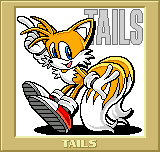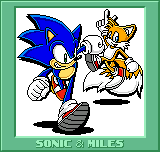Sonic the Hedgehog Pocket Adventure
| Sonic the Hedgehog Pocket Adventure |
|---|
|
Developer: SNK
|
Sonic Pocket Adventure is basically Sonic Unadvanced. This also marks the second time Sonic appeared on a third-party console prior to Sega leaving the first-party console business in 2001.
Contents
Sub-Page
| Prototype Info |
Debug Mode
Change byte 0x1F of the ROM to 0xFF in a hex editor to enable Developer Mode. (This is done automatically in some ancient emulators such as "Rather a Pokemon Emulator?" and NeoPocott, for some reason.) When the Sega screen is displayed, press Option to jump to the main debug menu.
An interesting function of the debug mode is that it allows the player to switch between Sonic and Tails by pressing B. Pausing the game no longer causes the Pause banner to appear and it is possible to trigger a free-movement mode by pressing A + B. Additionally, you can also press Start+Select at the SEGA screen on an emulator or frontend like Retroarch to get here as well.
Beginning
This is pretty straightforward. Simply pick the level with which you wish to start the game, as though it were any other level select screen.
The "Test" levels are just clones of Neo South Island, which will crash the emulator when selected.
The Zone names are largely accurate to the final game. Neo South Island is shortened to "South Island" for space reasons, Aquatic Relix is spelled "Aquatic Relics", and Aerobase is spaced as "Aero Base".
Go To Room
This will take the player to the puzzle and option screen.
Direction
This will take the player to the ending scenes.
Sound Test
Opens up a simple sound test, clearly more developer-facing than the fancy animated sound test players can unlock on the Game Options screen.
Debug Option
A bit more difficult to understand.
- DEBUG DISP - Toggles the display of X/Y coords of the player in the HUD.
- ATK DISP - Toggles the display of hitboxes around destroyable objects (Enemies, Monitors, etc.).
- BDY DISP - Toggles the display of hitboxes around the player.
- MUTEKI - Toggles invulnerability for the player (can't be hurt).
- ALL CLEAR - Toggles a full savegame.
Regional Differences
| To do: Is this everything the region changes? The text is all in English regardless. |
Sonic Pocket Adventure uses a single multi-region ROM but varies some details based on the console region.
Photo Pieces
Every Zone in the game features a number of hidden Photo Pieces which can be arranged into character artwork in the Puzzle Room. Oddly, the "Tails"/Miles naming seems to be inverted compared to what would generally be expected, and Sonic's arms are miscoloured in one of them.
| Japan | US |
|---|---|

|

|

|

|

|

|
Time Attack Name
When first entering the "Time Attack" mode, one must beforehand enter a name which will then be saved whenever a new time record is reached in the game. On the Japanese console, you can use katakana and hiragana in addition to alphabetic characters. On the International system, it's only the latter (obviously).
- Pages missing developer references
- Games developed by SNK
- Pages missing publisher references
- Games published by SNK
- Neo Geo Pocket Color games
- Pages missing date references
- Games released in 1999
- Games released in November
- Games released on November 30
- Games released in December
- Games released on December 3
- Games with debugging functions
- Games with hidden sound tests
- Games with hidden level selects
- Games with regional differences
- To do
- Sonic the Hedgehog series
Cleanup > Pages missing date references
Cleanup > Pages missing developer references
Cleanup > Pages missing publisher references
Cleanup > To do
Games > Games by content > Games with debugging functions
Games > Games by content > Games with hidden level selects
Games > Games by content > Games with hidden sound tests
Games > Games by content > Games with regional differences
Games > Games by developer > Games developed by SNK
Games > Games by platform > Neo Geo Pocket games > Neo Geo Pocket Color games
Games > Games by publisher > Games published by SNK Playmore > Games published by SNK
Games > Games by release date > Games released in 1999
Games > Games by release date > Games released in December
Games > Games by release date > Games released in December > Games released on December 3
Games > Games by release date > Games released in November
Games > Games by release date > Games released in November > Games released on November 30
Games > Games by series > Sonic the Hedgehog series




